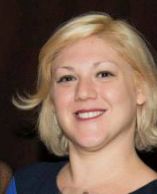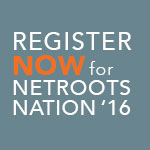After a great run, the Winning the Internet blog has been retired. However, you can still keep in touch with New Media Mentors here.

Colleen Hutchings

Allyson Goldsmith
As we get ready for Netroots Nation 2015, we’re taking a closer look at some of the convention’s most exciting training sessions. We’re interviewing the trainers and taking you inside some of online activism’s most popular and elusive topics.
Today we’re interviewing Allyson Goldsmith and Colleen Hutchings, who’ll be leading Email Campaigns that Engage Activists, Raise Money and Move Your Mission.
NN15 Training Session
Email Campaigns that Engage Activists, Raise Money and Move Your Mission
Email programs often have conflicting priorities: budgets need to be met, activists are waiting to be engaged and you have to keep working to meet your organization’s mission goals. This training will help you develop strategies and tools to achieve all these goals with a cohesive email program. You’ll learn how to set the goals of your program, analyze data and develop a robust messaging calendar—including rapid response!—that helps you succeed.
Interview
Q: Tell us about yourselves and your experience managing email campaigns.
Colleen: I’ve been running email campaigns for nearly 10 years – first with NARAL Pro-Choice America and then the DSCC and EMILY’s List during the ’08 cycle and with EWG for the last 6 years. It’s been awesome working with lists that are made up of passionate, committed supporters. Whether it’s been political work or non-profit work, one thing has always been the same: our supporters have believed in us, our missions and were committed to a larger movement.
Allyson: I’m a digital strategist with a passion for email because of its power to help campaigns engage supporters and create change. I’ve managed email programs including strategy, editorial calendars, production, and analytics for Nothing But Nets, the National Organization for Women, and several other organizations. While I was working for the National Organization for Women through running innovative campaigns I improved their email fundraising by 22.5% and doubled their advocacy response rates.
Q: In your opinion, what is the most common mistake that people make when managing a mass email program?
Colleen: I almost answered “not double checking your work.” But things like typos, segment oops and broken links are small scale. I think the biggest mistake people make is not using their lists to their full capacity. Email supporters are your core brand ambassadors and word-of-mouth spreaders, activists and donors. Working with an email program is more than just sending out copy or trying a new trick. It’s recognizing who your audience is, how those people fit into your larger mission and utilizing them in a way that benefits them and your organization.
Allyson: The most common mistake I see is not having mobile friendly email templates and landing pages. More and more people are reading emails and wanting to donate or take action on their phones. If your email is hard to read or forms are difficult to fill out people are less likely to take the action. The other mistake I see are emails that lack a clear theory of change. People need to know why the action you want them to take matters to the overall goal of the campaign.
Q: What are the two most important principles to keep in mind when designing an email program?
Colleen: I think one of the most important things to keep in mind is your mission statement and sort of part b to that, is keeping in mind any numerical goals (dollars raised, activists engaged, etc). Every message that goes out – a fundraiser, an urgent action, a thank you note – should serve to further those goals and objectives.
Another top principle is thinking holistically. Messages don’t exist in a vacuum. Does your newsletter provide enough information so that activists feel informed for when you need them to take urgent action? Is your fundraiser compelling and connected to furthering the work your supporters count on you to do?
Allyson: The two most important things to keep in mind when designing an email program are the user experience and creating a culture of analytics and testing. The user experience includes the look and feel of your email, the theory of change, the number of asks made, and how often you email your supporters. It’s important to create a culture of testing and analytics to help you understand how to better engage your supporters and win your campaigns.
Q: Why should folks attend your session at Netroots Nation, and how can they connect with you?
Colleen: Our sessions is going to be an interactive training. We’ll share our tips and tricks from running million dollar email programs. But it won’t be us just pontificating. People will have the opportunity to develop their own campaign plans and calendars, talk them through and ask questions.
Allyson: If you want to learn how to develop an innovative email campaign that engage supporters, raise more dollars, and further your organizations mission come to our session. You’ll learn how to manage and prioritize the ever-increasing demands on an organization’s email program. We will discuss setting goals and determining the role an email program plays within an organization plus building multifaceted campaigns and messaging calendars that will further mission goals as well as fundraising, activism and other objectives. You’ll also learn how to analyze your email results to optimize your program.
Follow me on Twitter (@allyson8765) for tweets on everything digital!
To attend this training, or one of the 39 others at Netroots Nation 2015 in Phoenix, register now.




Comments are closed.